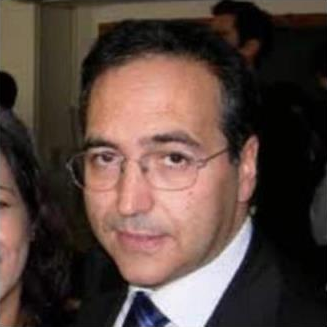Advances in Diagnosis, Treatment and Management of Endocrine Neoplasms
A special issue of Cancers (ISSN 2072-6694). This special issue belongs to the section "Cancer Therapy".
Deadline for manuscript submissions: 30 June 2024 | Viewed by 3648
Special Issue Editors
Interests: thyroid; thyroidectomy; thyroid cancer; endocrine surgery; thyroid surgery; parathyroid; parathyroid surgery; parathyroidectomy; lymph node dissection; sentinel lymph node
Special Issues, Collections and Topics in MDPI journals
Interests: thyroid cancer; breast cancer
Special Issues, Collections and Topics in MDPI journals
Interests: endocrine surgery; thyroid; parathyroid; mini-invasive surgery
Special Issues, Collections and Topics in MDPI journals
Special Issue Information
Dear Colleagues,
Endocrine neoplasm surgery has changed dramatically In the last few decades in light of the development of mini-invasive surgery, together with the principles of tailored and precision surgery and advances in the technology at our disposal (e.g., intraoperative nerve monitoring, near-infrared fluorescent imaging).
Nevertheless, many issues remain, for example, the indication and extent of surgery for thyroid carcinoma, the therapeutic options for poorly differentiated and anaplastic thyroid carcinoma, the management of patients with parathyroid carcinoma, the best surgical approach for patients with pheochromocytoma and paraganglioma, and research on novel biomarkers for neuroendocrine neoplasms.
For this Special Issue, original research articles and reviews are welcome. Research areas may include (but are not limited to) the following:
- Thyroid carcinoma;
- Parathyroid carcinoma;
- Adrenal glands neoplasms;
- Neuroendocrine neoplasms.
We look forward to receiving your contributions.
Prof. Dr. Pietro Giorgio Calò
Prof. Dr. Salvatore Sorrenti
Prof. Dr. Fabio Medas
Guest Editors
Manuscript Submission Information
Manuscripts should be submitted online at www.mdpi.com by registering and logging in to this website. Once you are registered, click here to go to the submission form. Manuscripts can be submitted until the deadline. All submissions that pass pre-check are peer-reviewed. Accepted papers will be published continuously in the journal (as soon as accepted) and will be listed together on the special issue website. Research articles, review articles as well as short communications are invited. For planned papers, a title and short abstract (about 100 words) can be sent to the Editorial Office for announcement on this website.
Submitted manuscripts should not have been published previously, nor be under consideration for publication elsewhere (except conference proceedings papers). All manuscripts are thoroughly refereed through a single-blind peer-review process. A guide for authors and other relevant information for submission of manuscripts is available on the Instructions for Authors page. Cancers is an international peer-reviewed open access semimonthly journal published by MDPI.
Please visit the Instructions for Authors page before submitting a manuscript. The Article Processing Charge (APC) for publication in this open access journal is 2900 CHF (Swiss Francs). Submitted papers should be well formatted and use good English. Authors may use MDPI's English editing service prior to publication or during author revisions.
Keywords
- thyroid carcinoma
- thyroidectomy
- parathyroid carcinoma
- parathyroidectomy
- adrenal gland neoplasms
- adrenalectomy
- neuroendocrine neoplasms








